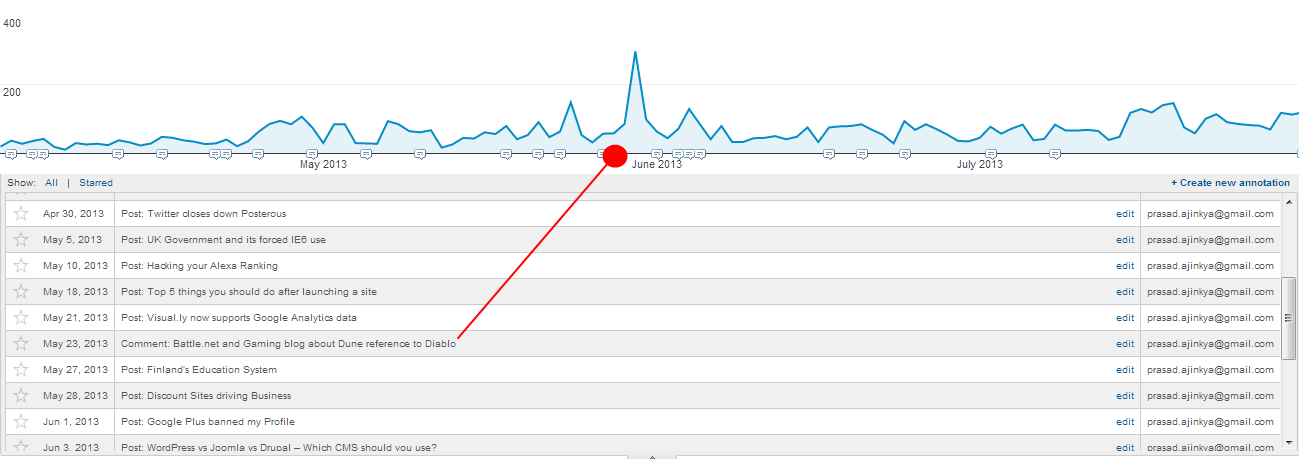Google Analytics is a tool which often amazes me. It contains so many features packed into it that it would take years simply to understand and appreciate all of them! One such feature which I do not see being used as much as it should be is the Annotations tool within Google Analytics.
What are Annotations?
Annotations are comments which you can put for a particular date. So in this picture above, I have indicated at what dates did I publish a post on my blog. I have been busy in the months of April and June!
You can see the annotations bar in the Audience Overview of your Google Analytics profile, there is a small expandable div which you need to click on first.
The thing with Annotations like most of the Google Analytics features is that in order to retain flexibility, it is an open framework. Meaning you can use it as you see fit. Which could be one reason why its not used as often as it should be!
Why should you use Annotations?
Annotations are a simple way to Attribute certain action that you did to a rise in traffic.
In the figure above, there are two trends which I want to explain using annotations.
- One is a clear spike in traffic which fetched me around 350 hits in a day. This I am attributing to commenting on a popular gaming blog with my link (I cross referenced that with the referral traffic coming to that site and they match)
- The other is an increase in the site traffic, this I am attributing to the increased frequency of posts that I am publishing on this blog
So, How does one use Annotations?
Well there are multiple scenarios how you could use annotations –
- If you are a team working together on a site, then you can decide on a format for annotations such as Dev. Post, SEM. Having this communicated across the team helps ensure that too many annotations do not clutter your dashboard and confuse you or your team members.
- If you are a blogger like me, then simply noting the time of the day you blog will help you maintain some regularity on the blog, with a clear sight on how this is impacting your traffic.
- If you are a marketing manager of a site and handle additional campaigns, say a product launch or a TV Commercial, then you can correlate the increase in traffic and goals on the site to that particular campaign. Remember the first step in attribution is measurement!
- Cyclicality and Seasonality can be tracked and predicted in the future using annotations. A simple example of this in action is when I had written about the Sunday Dip.
Enough of ideas on how one can use annotations, did you use annotations before and how did you use them?
